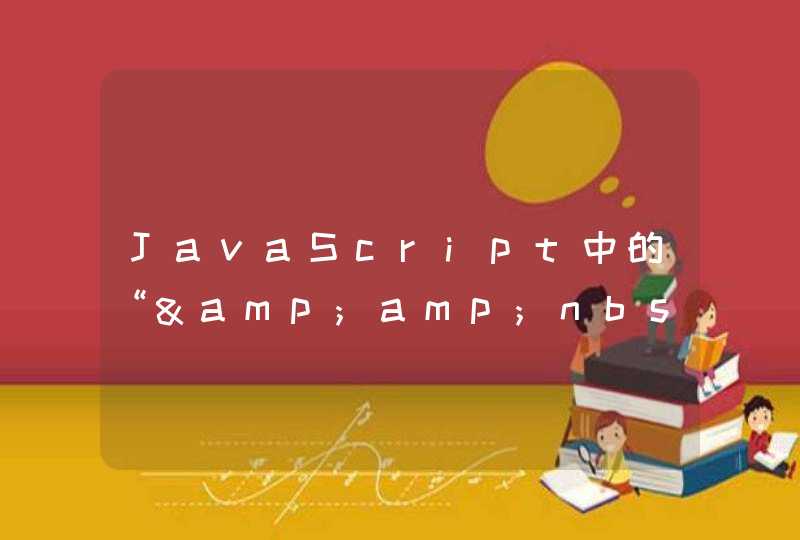
/**
* Construct a new JSLoaderEnvironment instance
* @class JSLoaderEnvironment is the class designed to be a
* representation of a unix-like shell environment.
* The purpose of this is to allow the infrastructure to abstract
* away any library file location knowledge for rapid and enterprise
* adoption and deployment
*/
function JSLoaderEnvironment(){
// Default
this.prefix="/assets/"
// Auto-discover location
var _remote=false
var s=0
var _script_tags=document.getElementsByTagName("script")
var endsWith=function(str, substr){
return (str &&str.indexOf(substr) == (str.length-substr.length))
}
for(s=0s<_script_tags.length++s){
var src=_script_tags[s].src
var src_orig=src
if(src){
if(src.indexOf("://")>-1)
{
src=src.substring(src.indexOf("://")+3)
src=src.substring(src.indexOf("/"))
}
if(endsWith(src,"jsloader.js") || endsWith(src,"jsloader-debug.js")) {
// If the domain is remote, assume we're running in hosted mode
_remote=(src_orig.indexOf(document.domain)==-1)
if(_remote) src=src_orig
this.prefix=src.substring(0, src.lastIndexOf("/")+1)
}
}
}
/**
* @private
*/
this.suffix=".js"
/**
* @private
* Make the Path of a module to meta/proj/release
*/
this.makeJSLoaderPath=function(m,p,r,suff){
// if just a url is specified, use it
if(!p &&!r) return this.stripExternalRef(m)
// build the m/p/r path
return this.prefix+m+"/"+p+"/incr/versions/"+r+ ((suff)?this.suffix:"")
}
/**
* The generate the path prefix for a MPR linked into the JSLoader Environmentiables
* @param m meta
* @param p project
* @param r release
*/
this.makePath=function(m,p,r){
// if just a url is specified, use it
if(!p &&!r) return this.stripExternalRef(m)
// build the m/p/r path
return this.prefix + m +"/" + p + "/" + r + "/"
}
/**
* @private
*/
this.env=new Object()
/**
* @private
*/
this.loaders=new Object()
/**
* The sets an environment variable (make sure it's safe for JS Object[key] notation)
* The idea here is that modules could set this, and pages which load the module
* can then get the Environment variables
* @param k javascript object[key]
* @param v value (technically could be of any type...)
*/
this.setEnv=function(k,v){
this.env[k]=v
}
/**
* The gets an environment variable previously set
* @param k javascript object[key]
* @returns the value set for this key
*/
this.getEnv=function(k){ return this.env[k]}
/**
* Lists all modules
* loaded in this environment.
* @private
*/
this._loadedJSLoaders=new Object()
/**
* This makes a normalized key to stick into loaded_modules and verify if things are loaded.
* @private
*/
this.normalize=function(m,p,r){ return (m+"__"+p+"__"+r).toLowerCase()}
/**
* This checks whether the given meta/project/release is already loaded.
* @param m metaproject (or the path of a JS file, if no other args are passed)
* @param p project
* @param r release
* @type boolean
* @returns Whether m/p/r is loaded
*/
this.isLoaded=function(m,p,r){
var xkey=this.normalize(m,p,r)
return(this._loadedJSLoaders[xkey]!=null)
}
/**
* Gets a "loader" based on the MPR specified in the arguments
* This is useful for loading subpackages. You can call {@link JSSubLoader#load} or {@link JSSubLoader#loadAll} on this
* and it will load submodules under a folder with the "release" number
* @see JSSubLoader
* @param m metaproject
* @param p project
* @param r release
* @returns void
*/
this.getLoader=function(m,p,r){
var key=this.normalize(m,p,r)
var loader=this.loaders[key]
if(loader) {
return loader
}
else {
loader=new JSSubLoader(this,this.makeJSLoaderPath(m,p,r,false)+"/")
var __path=this.makePath(m,p,r)
this.setEnv(p.toUpperCase()+"_PATH",__path)
this.loaders[key]=loader
return loader
}
}
/**
* Loads the requested module into the environment
* You can also load your own module by calling loadJavascript(url) if you want
* @param m metaproject
* @param p project
* @param r release
* @type boolean
* @returns void
*/
this.load=function(m,p,r){
var key=this.normalize(m,p,r)
var url=this.makeJSLoaderPath(m,p,r,true)
try{
if(this.isLoaded(m,p,r)) {
return
}
this.loadJavaScript(url)
this._loadedJSLoaders[key]="true"
} catch (e){ this.handleError(e)}
}
/**
* Loads a JavaScript file into the page
* @param {String} url the url of the javascript file
*/
this.loadJavaScript=function (url){
url = this.stripExternalRef(url)
document.writeln("<scri"+"pt src='"+url+"' type='text/javascript'></sc"+"ript>")
}
/**
* Loads a JavaScript file into the page
* @param {String} url the url of the javascript file
*/
this.loadStyleSheet=function(url){
url = this.stripExternalRef(url)
document.writeln("<li"+"nk rel='stylesheet' href='"+url+"' type='text/css'></li"+"nk>")
}
/**
* Strips out any double slashes, double dots, or cross domain references.
* @param s string
*/
this.stripExternalRef=function(s){
var exprs = [/\.\.+/g,/\/\/+/g,/\\\\+/g,/\:+/g,/\'+/g,/\%+/g]
// If it's hosted, we relax the protocol related regex
exprs = [/\.\.+/g,/\\\\+/g,/\'+/g,/\%+/g]
if (_remote)
for(var i=0i<exprs.lengthi++)
{
s = s.replace(exprs[i], '')
}
return s
}
/**
* Overwritable error handler
*/
this.handleError=function(e) {
}
return this
}
/**
* Construct a new JSSubLoader instance. You shoudl never need to call this, as {@link JSLoaderEnvironment#getLoader} gets you one of these from the environment.
* @class JSSubLoader is designed to load "sub" modules
* This is a wrapper which is produced when you call {@link JSLoaderEnvironment#getLoader}
* It is designed to allow sub-packages within a given MPR to be loaded easily. This is constructed by JSLoader.getLoader() call
* so you should never really need to construct one of these.
* @constructor
* @param {JSLoaderEnvironment} env_
* @param {String} prefix_ The path underneath which the submodules reside
*
*/
function JSSubLoader(env_, prefix_){
/**
* @private
*/
this.environment=env_
/**
* @private
*/
this.prefix=prefix_
/**
* @private
*/
this.loaded=new Object()
/**
* @private
*/
this.normalize=function(str){ return str.toLowerCase()}
/**
* Loads an array of subpackages
* @param {Array} pkgs an array of packages.
*/
this.loadAll=function(pkgs_){
for(i=0i<pkgs_.length++i) this.load(pkgs_[i])
}
/**
* Loads a subpackage, if it's not already loaded
* @param {String} url the url of the sub-package module file (m/p/r/submodule.js)
*/
this.load=function(pkg){
var p=this.normalize(pkg)
if (this.loaded[p]) {
return
}
this.loaded[p]=pkg
this.environment.loadJavaScript(prefix_+pkg+".js")
}
}
JSLoader = new JSLoaderEnvironment()
// LocalWords: fileoverview
在使用 C++ 编写 Cocos2d-x 游戏的时候,通常在运行游戏之前,需要加载游戏资源,这样是为了让游戏在运行时更为流畅,避免了在运行时加载资源,而出现卡顿现象,影响用户体验,因为加载资源是非常耗时、耗资源的操作。在 Cocos2d-html5 中也是同样,在运行游戏之前,预先加载好所有的资源(加载到浏览器缓存),以保证游戏的流畅运行。Cocos2d-html5 的加载流程
在开始我们的替换工作之前,大致说一下必要的(只注重我们在乎的细节问题)原有的加载流程,以**HelloHTML5World**为例 。从其主页面 index.html开始,我们需要了解三个文件的运作方式,index.html、cocos2d.js 和 main.js:
浏览器首先加载 index.html 页面,值得注意的有两点,在页面的 DOM 树中,能看到命名为**gamecanvas**的**Canvas**元素,它将会是游戏的画布,另一点,在页面的最后,加载了 cocos2d.js 文件。
cocos2d.js 内中,定义了程序运行需要的一些参数,如 显示 FPS,是否加载扩展库,物理引擎库等,其中 engineDir 设置了引擎所在的位置,appFiles 设置了,当前项目所用到需要加载的 js 程序代码。并定义了当 DOM 加载完成时运行的代码(你可以在 【这里】 查看所有代码。):
window.addEventListener('DOMContentLoaded', function () {
// 添加脚本
var s = d.createElement('script')
// 这里判断了是否使用自定义的 单文件作为库加载,对库的优化压缩文件
if (c.SingleEngineFile &&!c.engineDir) {
s.src = c.SingleEngineFile
}
else if (c.engineDir &&!c.SingleEngineFile) {
s.src = c.engineDir + 'platform/jsloader.js'
}
else {
alert('You must specify either the single engine file OR the engine directory in "cocos2d.js"')
}
document.ccConfig = c
s.id = 'cocos2d-html5'
// 将脚本加载到当前文档,地址是 jsloader.js 的实际地址
d.body.appendChild(s)
})
jsloader.js 里面设置了一堆需要加载的可执行脚本,保存在 engine 变量之中,在文件的最后,我们能够看到这样的代码:
// 将所有的 appFiles 添加到 engine 中,返回到新定义的变量 que 之中
var que = engine.concat(c.appFiles)
que.push('main.js')
...
// 后面一个 for 循环,添加所有文件到 document 中去
由以上代码,便将我们自定义的使用脚本和 main.js 添加进去了,而最后执行的也是 main.js 脚本,游戏的第一个运行场景就由此开始。main.js 里面创建了一个 cocos2dApp 的类型,它 继承(虽然在 js 中没有继承的概念,但有类似于继承的机制) 自 cc.Applicatoin,其中我们看到非常熟悉的函数 applicationDidFinishLaunching ,有这样一段代码:
// 调用 cc.LoaderScene Loading 界面,用以加载资源
cc.LoaderScene.preload(g_resources, function () {
// 当资源加载完毕,回调函数,运行第一个场景,而这个场景是由 cocos2dApp 的构造函数传入
director.runScene(new this.startScene())
}, this)
// main.js 最后一行
var myApp = new cocos2dApp(GameLayer.scene)
在 cocos2dApp 的构造函数中,初始化了一些必要信息,并调用了cc.AppController.shareAppController().didFinishLaunchingWithOptions(),这会间接的调用 Application 的 run 方法,从而导致applicationDidFinishLaunching方法被触发。它运行了cc.LoaderScene的 preLoad 方法,这内中就是 Loading 界面的实现了,它传入了一个回调函数,用于确定在资源加载完毕之后启动第一个场景(Loading 其本身也是一个场景)。
怎样自定义 Loading 界面
前面我们了解了 Cocos2d-html5 的大致加载流程,而现在我们关注的是 cc.LoaderScene 所在的文件 CCLoader.js 的内部实现。里面定义了 cc.Loader 和 cc.LoaderScene 类型,Loader 内部完成了,对资源加载的所有操作步骤实现,而 LoaderScene 则是对 Loader 的进一步封装,将加载的过程,用一个界面来可视化的实现出,如用一个加载场景,上面一个 Logo 显示,同时显示了当前加载资源的进度百分比。我们要自定义实现 Loading 界面,那就是重新实现 LoaderScene 即可。对于 LoaderScene 的实现比较简单,我们参考其实现,自定义一个 Loader.js 文件,实现 Loader 类,完成自定义Loading 界面的具体实现,其中大多参考(实际是copy)了 LoaderScene 的实现,在其上修改扩充,它完成了修改 Logo 图片,并添加了一个简单的进度条,是加载过程更为一目了然,这里并没有多么炫的效果,但足以让你了解,你该如何自定义一个 Loading 界面(只贴出了相比较 LoaderScene 所修改的部分,但你可以在 【这里】 获取到源码):
// 这里定义了 Logo 图片的 Base64 编码,至于为什么,后面将会说明,这里的编码内容挺多,故做简写
logoData = "data:image/pngbase64,..."
Loading = cc.Scene.extend(
_logo: null,
_logoTexture: null,
_texture2d: null,
_bgLayer: null,
_label: null,
_winSize:null,
_processLayer: null,// 相比 LoaderScene 的实现,添加了两个属性,标示进度条层和进度条长度
_processLayerLength: null,
// 构造函数
ctor: function () {
this._super()
this._winSize = cc.Director.getInstance().getWinSize()
},
init:function(){
cc.Scene.prototype.init.call(this)
// logo 图片和 label 的添加 .. 这里省略,于 LoaderScene 同样
// 设置进度条层,它就是一个红色颜色层,通过长度来标示加载的进度
this._processLayerLength = 500
this._processLayer = cc.LayerColor.create(cc.c4b(255, 100, 100, 128), 1, 30)
this._processLayer.setPosition(cc.pAdd(centerPos, cc.p(- this._processLayerLength / 2, -logoHeight / 2 - 50)))
// 可以启用锚点,并设置以满足自己的需要
// this._processLayer.ignoreAnchorPointForPosition(false)
// this._processLayer.setAnchorPoint(cc.p(0, 0))
this._bgLayer.addChild(this._processLayer)
},
// 以下方法的实现并没有跟 LoaderScene 有什么不同
// _initStage: ...
// onEnter ...
// onExit ...
// initWithResources ...
// _startLoading ...
// _logoFadeIn
// 每帧更新
_updatePercent: function () {
var percent = cc.Loader.getInstance().getPercentage()
var tmpStr = "Loading... " + percent + "%"
this._label.setString(tmpStr)
// 设置当前进度条层的长度
this._processLayer.changeWidth(this._processLayerLength * percent / 100)
if (percent >= 100)
this.unschedule(this._updatePercent)
}
})
// 这里于 LoaderScene 的实现同样
Loading.preload = function (resources, selector, target) {
if (!this._instance) {
// 创建一个 Loading
this._instance = new Loading()
this._instance.init()
}
// ...
return this._instance
}
这里我们只是 copy 了一份 LoaderScene(copy 修改会让这里的操作步骤简化) ,重新命名 Loading 然后在此基础添加了一个进度条显示,当然这里的 Loading 类完全由你自己定义,它有哪些显示,你可以随意定制,只要在 _updatePercent 方法实时获取当前进度,并且更新到界面显示即可。
我们注意到在 Loading 文件,定义了一个 logoData 变量,它保存的是一张图片的 Base64 位格式编码,这样做的好处是,在运行显示图片之时,不会出现此图没有加载的情况,但是也由于它是 Base64 编码的图片,所以图片不宜过大,否则编码后的数据量很大,其次解码也需要耗时。
完成 Loading.js 后,我们需要加载它,并让它运行,以替换 LoaderScene 的运行。首先修改项目 cocos2d.js 文件,在**appFiles**添加 Loading.js 文件。其次修改 main.js 文件内 cc.LoaderScene.preload 为 Loading.preload 即可,刷新 index.html 界面,将能看见 Loading 界面已经替换。它加载速度的快慢取决于游戏资源内容的多少 ~




































































